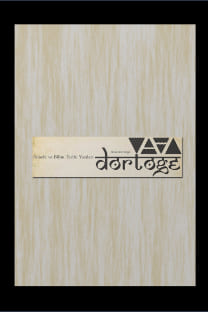Ahmed Nebîl ve İnsânın Menşe’î
Ahmed Nebîl, Ernst Haeckel, Bahâ Tevfîk, Monizm
Ahmed Nebîl and İnsânın Menşe’î
Ahmed Nebîl Ernst Haeckel, Bahâ Tevfîk, Monism, Th e Descent of Man,
___
- Akın, Galip (2002). “Avrupa ve Osmanlı İmparatorluğu’nda İlk Antropolojik Çalışmalar”, Ankara Üniversitesi Dil ve Tarih-Coğrafya Fakültesi Dergisi, 42, (1-2), 9-21.
- Dayrat, Benoît (2003). “/ e Roots of Phylogeny: How Did Haeckel Build His Trees?, Systematic Biology”, 52, (4), 515-527.
- Demir, Remzi, Yurtoğlu, Bilal (2014). “Vahdet-i Mevcûd: Bahâ Tevfîk ve Ahmed Nebîl’in Haeckel’den Bir Tercümeleri”, Vahdet-i Mevcûd Bir Tabî’at ‘Aliminin Dîni, Ernst Haeckel’den çevirenler: Baha Tevfîk ve Ahmed Nebîl, Sadeleştirenler ve Yayına Hazırlayanlar: Remzi Demir, Bilal Yurtoğlu, Ali Utku, Konya.
- Haeckel, Ernst (1899). * e Last Link, Our Present Knowledge of * e Descent of Man, London. Lustig, A. J. (2002). “Erich Wasmann, Ernst Haeckel, and the Limits of Science, * eory in Biosciences”, 121, 252-259.
- Karakoç, İrfan (1999). “Türkiye’de Sosyalist Düşüncenin Az Bilinen Bir İsmi Ahmed Nebîl”, Tarih ve Toplum, 191, 4-8.
- Nicholson, James, Margetts, Daniel (2007). “Who was… Ernst Haeckel?”, Biologist, 54, (1), 32-34.
- Özbay, Çiğdem (2014). Mustafa Satı El-Husrî’nin Etnografya Tarihimizdeki Yeri, (Yayınlanmamış Yüksek Lisans Tezi) Ankara Üniversitesi/Sosyal Bilimler Enstitüsü, Ankara.
- Potts, George D. (1976) “Ernst Haeckel: A Biographical Sketch”, " e American Biology Teacher, 38, (9), 544-545+556.
- Sedgwick, Adam (Ed.) (1899). Proceedings of the Fourth International Congress of Zoology, London.
- ISSN: 2146-7064
- Yayın Aralığı: Yılda 2 Sayı
- Başlangıç: 2012
- Yayıncı: Nobel Akademik Yayıncılık
Ortaçağ Dönemi’nde Hint’te Astronomi Çalışmaları
Kimya Tedrisatı ve Kimya Sanayii GelişimSürecinde Kimyager, Kimya Annali, Kimya ve SanayiMecmuaları
Kimya TEDRİSATI, Kimya Sanayii GELİŞİM, İrfan ELMACI
Araf ’ta Barınan: “Özdeşlik” ve “Değil-Özdeşlik” Arasında Sanatçının Hupokrıtes Olarak Portresi
Felsefe Dergileri Bibliyografyası (IV): Yazko Felsefe Yazıları
Yazko Felsefe YAZILARI, Ümit ÖZTÜRK
Kemalpaşazâde’nin Risâle Muallaka Alâ Şerhi’lİşârât ve’l-Muhâkemât Eseri Üzerine Bir Değerlendirme
Zaman ve Zihin İlişkisi Bağlamında Bazı İdealist ve Realist Zaman Öğretileri
Kemalpaşazâde’nin Risâle Muallaka Alâ Şerhi’lİşârât ve’l-Muhâkemât Eseri Üzerine Bir Değerlendirme
Bilim_Kulturu_Kitap_Tanitimi.pdf
Modernleşme Serüveni: Doğu-Batı Ekseninde Bir Mukayese
